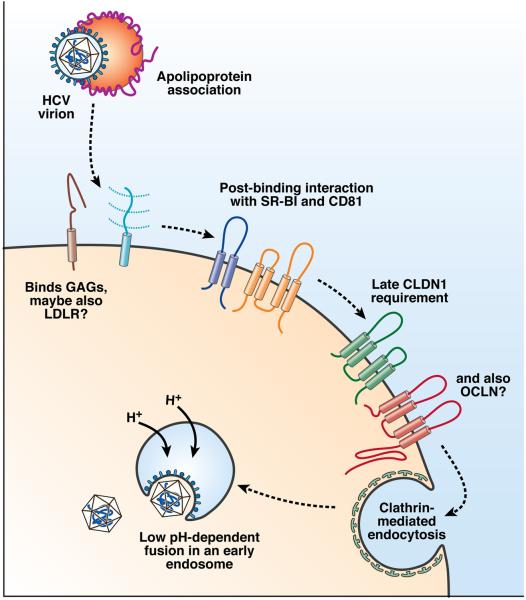Figure 1.
Overview of HCV cell entry. The HCV entry process appears to require numerous interactions with host factors, both soluble and on the cell surface. The incoming virion, which appears to associate with apolipoprotein complexes, may first bind a host cell by interacting with the low density lipoprotein receptor (LDL-R) and glycosaminoglycans (GAGs) on the cell surface. Many HCV entry factors are required post-virion binding to the host cell. These include an early requirement for CD81 and scavenger receptor class B type 1 (SR-B1), followed by a later utilization of the tight junction protein claudin-1 (CLDN1). It is yet to be determined when the latest HCV entry factor occludin (OCLN), also a tight junction protein, is required. Such interactions result in endocytosis of the virion, where it fuses with an endosomal membrane upon acidification to release the viral nucleocapsid.

